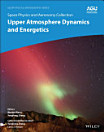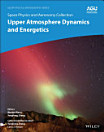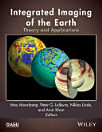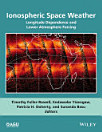Auroral Dynamics and Space Weather
Kuhusu kitabu pepe hiki
This monograph features discussions of:
- New auroral phenomena due to the ring current ion and polar rain electron precipitation
- Various auroral forms and hemispheric asymmetry
- Auroral model development and MHD simulations
- Application of the auroral observations for radio absorption and scintillation
- Aurora nowcast and forecast for space weather operations
Auroral Dynamics and Space Weather is a valuable contribution for scientists, researchers, space weather operators, and students of Earth's space environment.
Kuhusu mwandishi
Dr. Yongliang Zhang is a Senior Scientist at the Applied Physics Laboratory in Johns Hopkins University, Laurel, Maryland, USA. His research focuses on aurora, ionosphere and thermosphere remote sensing based on image intensifier (FUV) measurements. He developed many algorithms for FUV based auroral (precipitating electrons, boundary), thermosphere (O/N2 ratio, NO column density), and ionosphere (TEC) products using image data. These products have been used by the community and resulted in many publications. He discovered new auroral phenomena, such as detached aurora, polar rain aurora, neutral particle aurora, etc. He developed an empirical global auroral model of electron energy flux and mean energy. This auroral model has been used by scientists around the world in their ionosphere/thermosphere simulations and improved their simulation results. The auroral model (equatorward auroral boundary) has been included in the 2012 International Reference Ionosphere. He also developed an empirical auroral model and received a NASA group achievement award in 2008. Dr. Zhang is a member of AGU since 1990, member of COSPAR since 2008, member of AOGS since 2009. He has published a number of papers on new aurora phenomena: ring current and polar rain aurora in some of the eminent AGU journals, JGR and GRL. He received excellent reviewer award for JGR-space physics in 2012.
Dr. Larry J. Paxton is a Principal Scientist and Supervisor for Geospace and Earth Science Group at the Applied Physics Laboratory in Johns Hopkins University in Laurel, Maryland, USA. He is an expert and leader in both scientific research and instrument development in the field of aurora, ionosphere and thermosphere. He has published many scientific and technical papers. He is the PI for DMSP/SSUSI and TIMED/GUVI that is dedicated for the near earth space environment monitoring, including three areas mentioned above. He also serves as a member for many panels and committees including the American Astronomical Society, American Geophysical Union, American Meteorological Society and Sigma Xi. He is now AGU Secretary for Aeronomy. Dr. Paxton has organized over 35 special sessions at American Geophysical Union (AGU) meetings since 2000. Dr. Paxton has been author or co-author on over 250 abstracts at AGU meetings since 2000 and been author or co-author of over 450 presentations at national and international meetings.








